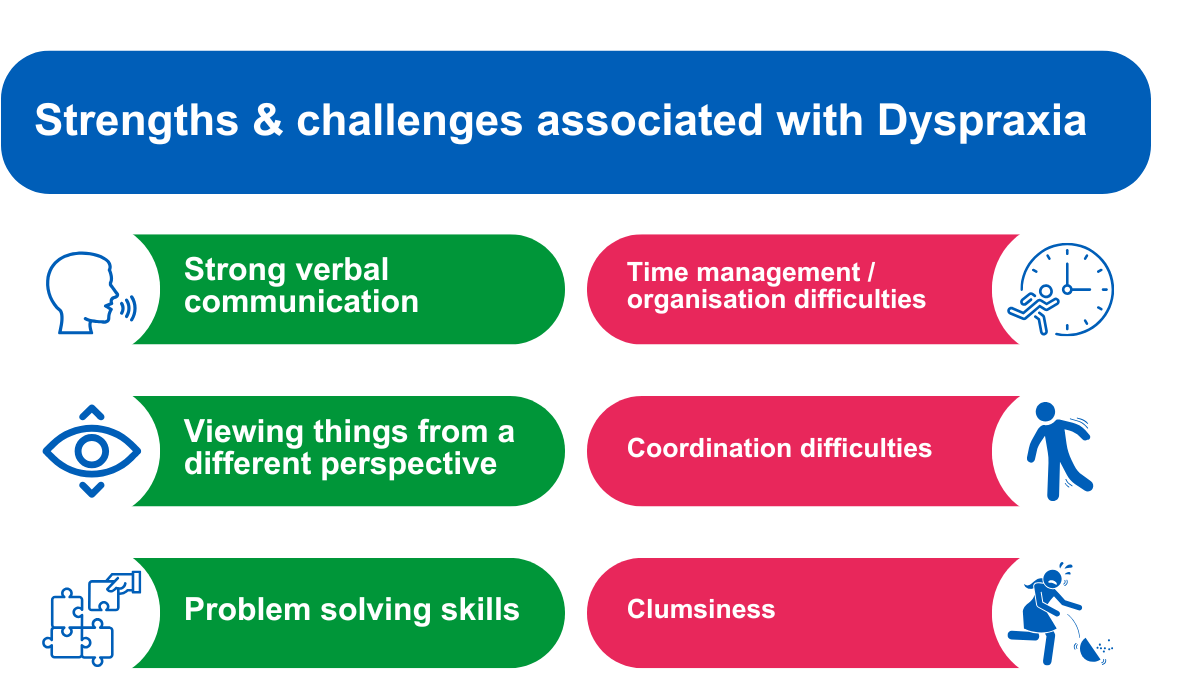Understanding Neurodiversity

Understanding neurodiversity, why does it matter
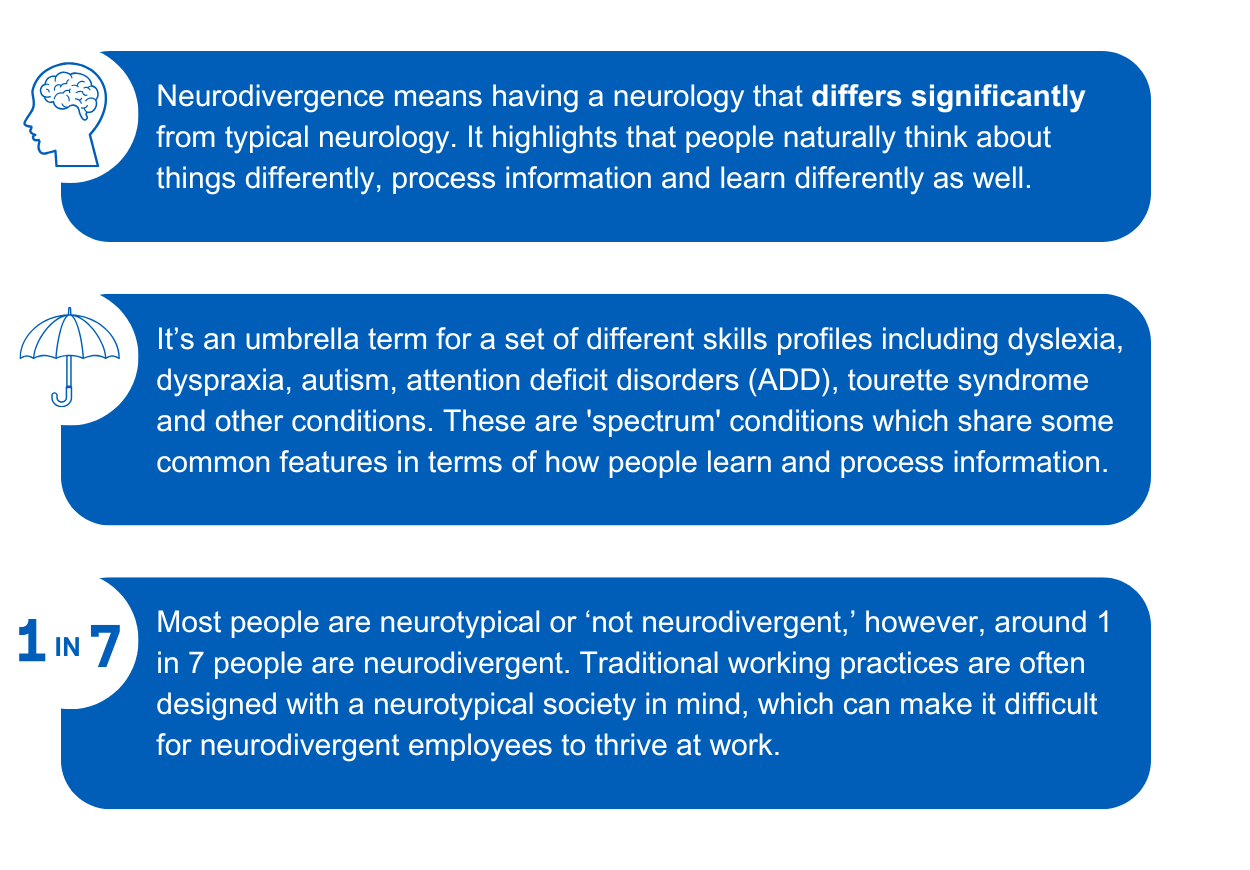
You may have heard of many of these types of neurodiversity
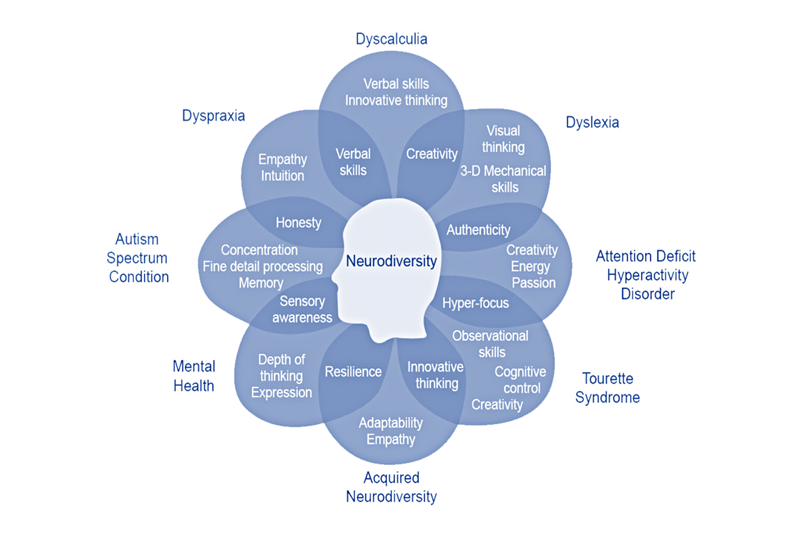
Most common types of neurodiversity
Autism
Autism spectrum disorder (ASD) is a lifelong, developmental disability that affects how a person communicates with and relates to other people, and how they experience and make sense of the world around them.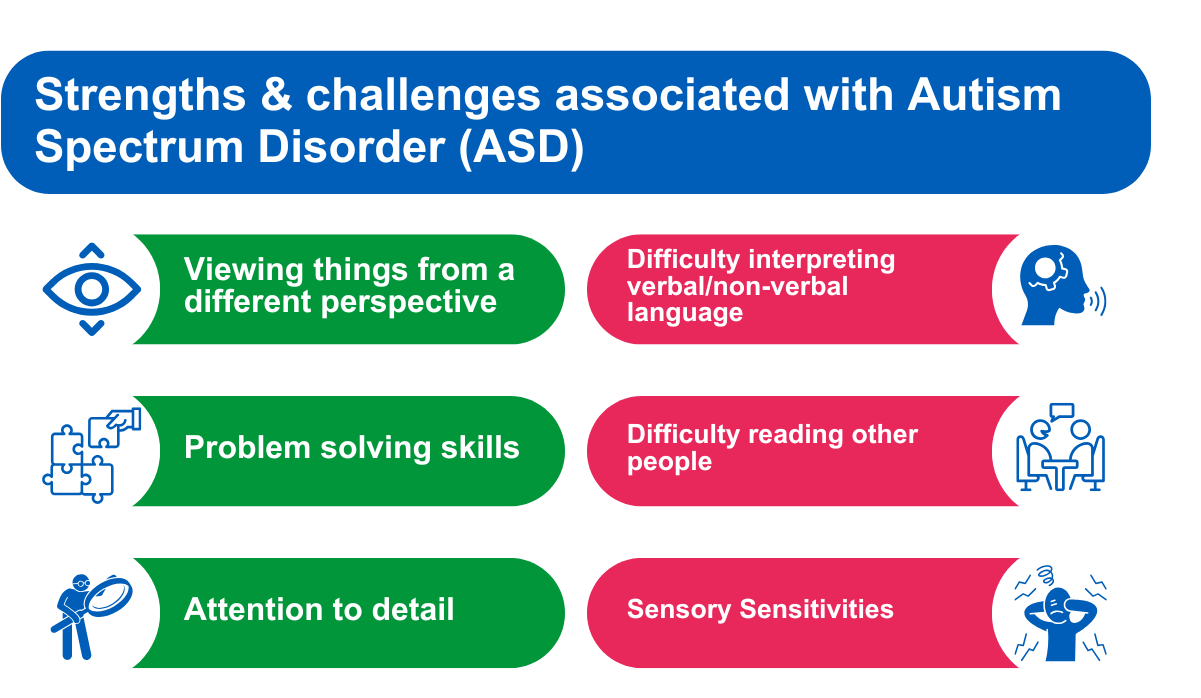
ADHD
ADHD is classified as a brain-based disorder characterised by a persistent pattern of inattention and/or hyperactivity and impulsivity. Contrary to popular perception, the brains of people with ADHD are under-stimulated, helping to explain these characteristics.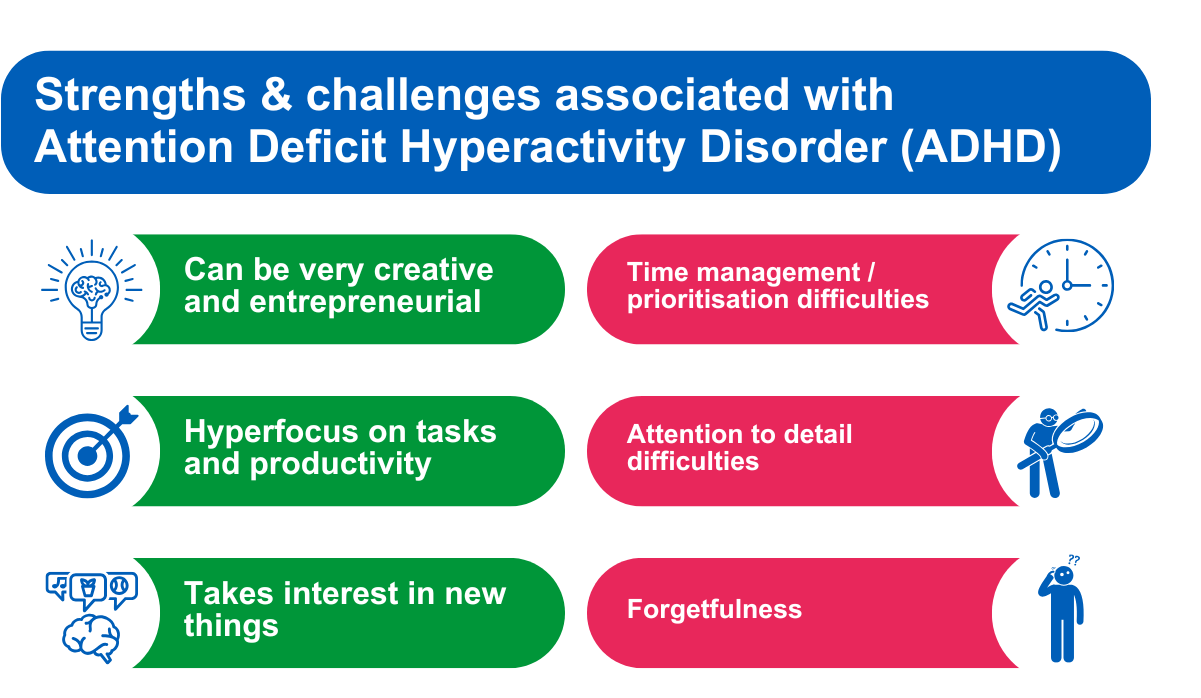
Dyslexia
Dyslexia is a developmental condition that primarily affects reading, writing and spelling.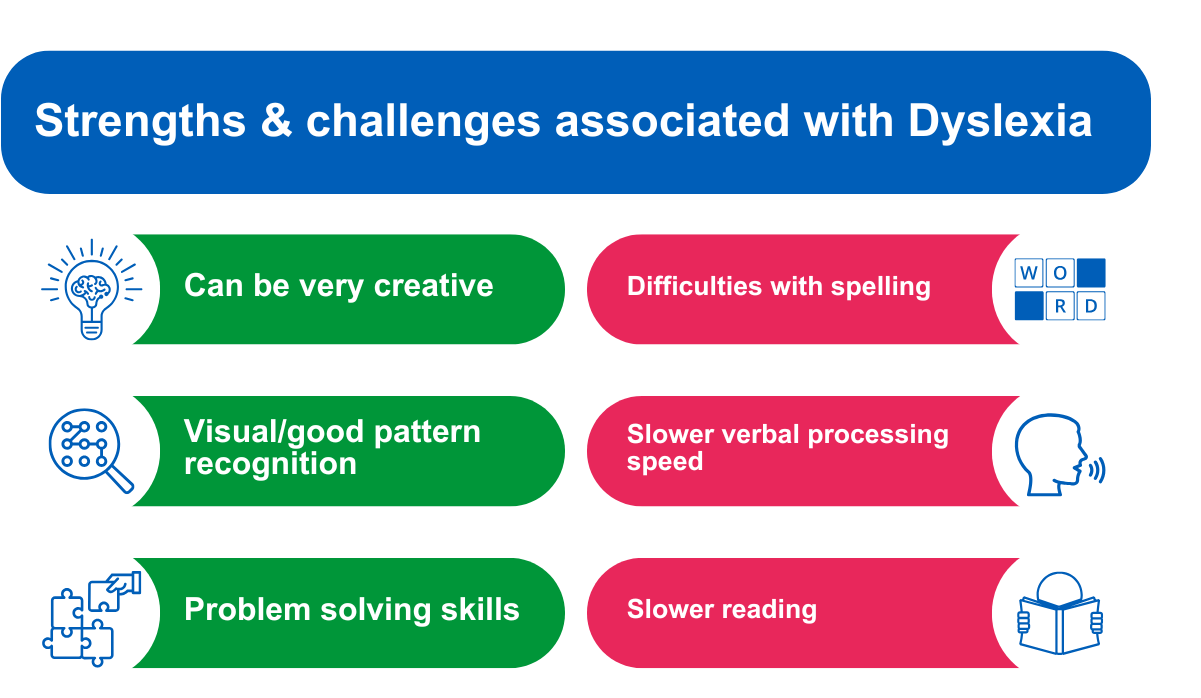
Dyspraxia
Dyspraxia is a developmental coordination disorder (DCD) that affects fine and/or gross motor skills, coordination and balance; it may also affect speech.